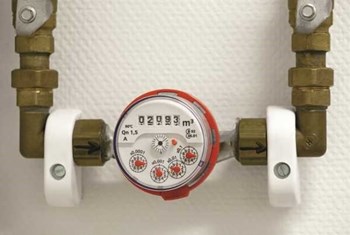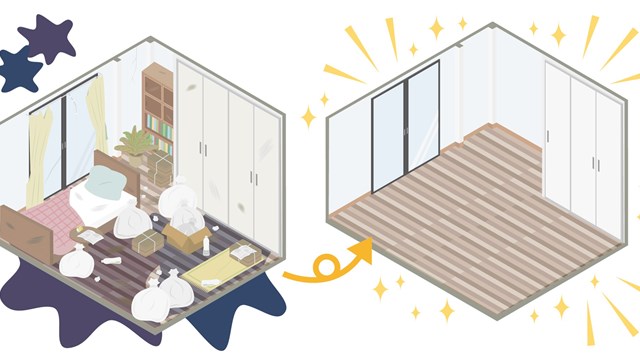
Stretching from upstate and leading all the way down to the Big Apple, New York City’s water system truly is a modern marvel. The system, which includes huge supply tunnels, makes it possible for millions to live and work in New York City. But like so many other utilities these days, the cost of that life-giving and business-sustaining water is constantly going up. Depending on who you ask, compared to the cost for water just a generation ago, fees for water usage in the city are either sky high or downright unreasonable.
Questions about water billing began surfacing in 2011 when the New York City Department of Environmental Protection (DEP) started installing Automated Meter Reading (AMR) systems to monitor customers’ water usage. Residents in Queens began seeing what they thought were inflated bills and asked the New York City Council to investigate.
While some residents feel they are in much the same predicament today as when the billing changeover began more than a decade back, a more responsive DEP and more programs are meant to ensure that all water customers are treated fairly, whether or not they have a fully functioning water meter on their building.
Counting Each Drop
With 836,000 customers representing more than 8 million users served by 7,000 miles of water mains in the city, the New York City Water Board typically charges each building owner for water usage, rather than individual users. This system of billing is very different from the previously widely used method, which was to charge a building for water usage as a “frontage fee”—based on the size of the building. That is a flat rate paid according to the building's size.
These days, water usage is generally measured in multifamily buildings by a meter that reads the usage of the entire building. In most city residential buildings, residents are billed a fraction of the amount of the overall bill: if there are 100 units, each will pay one hundredth of the total bill, for example.
New York’s water billing has drastically changed in terms of rates and billing structures over the decades. According to Gregory Carlson, executive director of the Federation of New York Housing Cooperatives and Condominiums (FNYHC), the cost of water in the city has increased 80 percent over the past seven years.
“Using water has become moderately expensive over the past 20 years. Wasting it is incredibly expensive,” says Alan Rothschild, a utilities consultant and the president of the Vantage Group, a tri-state water conservation and cost management company.
A one-gallon-per-minute leak in a toilet, for example, if left unrepaired, can cost a building $6,000 per year in unnecessary water costs, Rothschild says. “You basically have to watch your meter usage.”
Leak Lessons
Besides the cost of wasting water that results from a leak, such inefficiencies can create an added cost through the wear and tear that the leak is doing on the building’s plumbing system. It also can pile on added energy costs from pumping and heating the unnecessary water.
While the new meters can be better at determining specifically how much water is being used, they are not infallible. Some of the new devices have grossly overcharged customers, leading some residents to contact consultants for help in disputing their water bills.
Part of the problem may be on the ground, so to speak. After installing new meters as a way to eliminate estimated increases in a user’s rate, the meter readers hit the streets and check the devices. But if a meter reader cannot get access to a building to check the meter, they estimate a user’s bill. Initially, about 30 percent of the new meters weren’t working properly and actually were causing inflated readings.
The problem continues. A couple of months ago, a client contacted Michael Topper, president of utilities consultant AquaAudit in the Bronx. The client’s water bill was $86,000, but nobody at the DEP was able to solve his problem. Topper went to the client to investigate and found that the wrong head had been put on his meter, which was charging the client at a rate of 280 percent of his usage. Topper got the water bill adjusted to $2,200.
He’s also had client water bills totaling $15,000 pared down to $4,400 and other major decreases. Part of the problem that leads to new clients for Topper is that water meters are machines and machines are imperfect.
“Water meters are like people—the older they get, the slower they go,” Topper says. In some cases, slower, older meters were charging people far less than what they owed, he says.
Discussing how water billing has changed in the city is kind of like following a moving target. Every July, the water rate changes, as determined by the Water Board. This July, a 5.6 percent increase took effect for water and sewage usage, (an increase which DEP says is lower than previous projections.)
For the average customer, DEP estimates that: A typical single-family homeowner will see an increase from $939/year to $991/year for water and sewer bills—slightly more than $4/month (based on an average consumption of 80,000 gallons of water per year), and a typical multi-family unit with metered billing will see an increase from $610/year/unit to $644/year/unit—less than $3/month (based on an average consumption of 52,000 gallons of water per year).
While in the past, the city simply used to have a flat rate based upon the frontage of the building, these days the rate is billed per 100 cubic feet of use.
“I think the DEP tries very hard to make sure their billing is correct. Sometimes, they bill you on an incorrect meter or wrong meter number,” Topper says.
Part of the problem with water billing is the nature of some of the spread out communities in the city. Because of their makeup, the community may need to do the same water system upgrade many times, even as much as 100 times. Dealing directly with DEP, though, is another matter.
“The DEP is out here in Queens; going to that department can be very frustrating,” Carlson says.
Clearly, the local DEP is becoming kinder and gentler and has developed a number of programs to counteract errors with billing, or even to give residents a break if their bill is astronomical compared to past bills. Through the Multi-Family Conservation Program, if a multi-family building has switched to meter-based billing and noticed a huge increase in their new bills, through the program they can apply to switch back to the old billing method. One caveat: they must make the change back within two years of the switch.
With the help of the DEP’s service line protection program, the lines from the building that connect with the water main under the street can be insured through an insurance company. Since the building owner must replace the connecting water and sewer lines if they are broken—a job that can cost $5,000 to $15,000—having such insurance is essential, experts say. The program was put in place earlier this year.
Conserving Water and Becoming Greener
It’s not as if DEP doesn’t practice what it preaches; the department is working to save money and resources by being greener and by offering chances for its customers to do the same. Six years ago, the government agency instituted a plan to become more efficient. That plan includes paperless billing and the ability of customers to monitor their water usage online daily. The option can help residents save money and water by enabling them to see if there is a spike in water use. Other resources through the agency also can be money savers.
The DEP’s Leak Forgiveness Program is offered to customers through a written application sent to the customer services mailing address on their bill. It can be a great benefit for those residents, who receive a very large water and sewer bill because of an extraordinary leak on the property—a leak that was not in a fixture like a toilet, sink, tub or a garden hose, and which needed a plumber to repair. The program compares the high bill to other normal bills from matching time periods and if the bill meets certain guidelines, the customer may get a reduction in the charges. However, the charges on the high bill will never be lowered by more than half their original value.
DEP’s Leak Notification Program recently has been expanded to include four-family homes and larger properties. The program enables DEP to alert customers to potential water leaks on their property. Customers can sign up online to get email notifications when their water use increases significantly over several days, giving homeowners the chance to quickly respond to potential leaks and fix them before they become very costly. Those who want to join the program must have a home that’s within the program parameters, and also must have an Automated Reading Device [one of the new meters] installed at the property.
Consultants like Rothschild have special tools to help their clients. His firm will install a device to monitor the water meter—yes, that’s right, they meter the meters. The monitors can help customers achieve at least a 10 percent decrease in their water bills and have helped bring decreases of up to 50 percent.
“We can detect significant leaks. Sometimes the leak patterns could give us clues as to what could be wrong,” Rothschild says. “Unfortunately, people don’t contact us until they have a problem.”
Curbing one’s use of this increasingly precious resource also can save money and the environment. DEP recently re-instituted a toilet rebate voucher program for city residents. Through the program, residents with less efficient toilets can get a $125 voucher to replace each toilet with a new low-flow toilet, which uses less water.
Residents also can think outside the box and get a rain barrel. Rather than wasting money on water to quench your flowers, with a rain barrel, a resident can collect water from their roof and use the water later on for flowers and other landscaping. DEP recently had a giveaway in Queens of the barrels, gifting residents with 2,000 of the simple-to-install devices.
For more information on the New York City DEP, visit its website, which can be found at http://www.nyc.gov/html/dep/ html/home/home.shtml.
Jonathan Barnes is a freelance writer and regular contributor to The Cooperator.






Leave a Comment